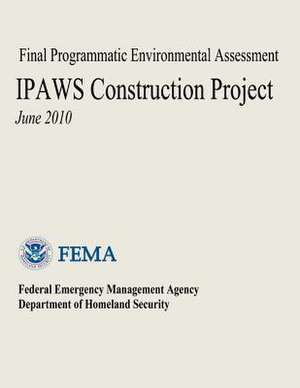Final Programmatic Environmental Assessment - Ipaws Construction Project
Autor U. S. Department of Homeland Security, Federal Emergency Management Agencyen Limba Engleză Paperback
Preț: 121.68 lei
Nou
Puncte Express: 183
Preț estimativ în valută:
23.29€ • 24.22$ • 19.22£
23.29€ • 24.22$ • 19.22£
Carte disponibilă
Livrare economică 25 martie-08 aprilie
Preluare comenzi: 021 569.72.76
Specificații
ISBN-13: 9781482736632
ISBN-10: 1482736632
Pagini: 76
Dimensiuni: 216 x 280 x 4 mm
Greutate: 0.2 kg
Editura: CREATESPACE
ISBN-10: 1482736632
Pagini: 76
Dimensiuni: 216 x 280 x 4 mm
Greutate: 0.2 kg
Editura: CREATESPACE
